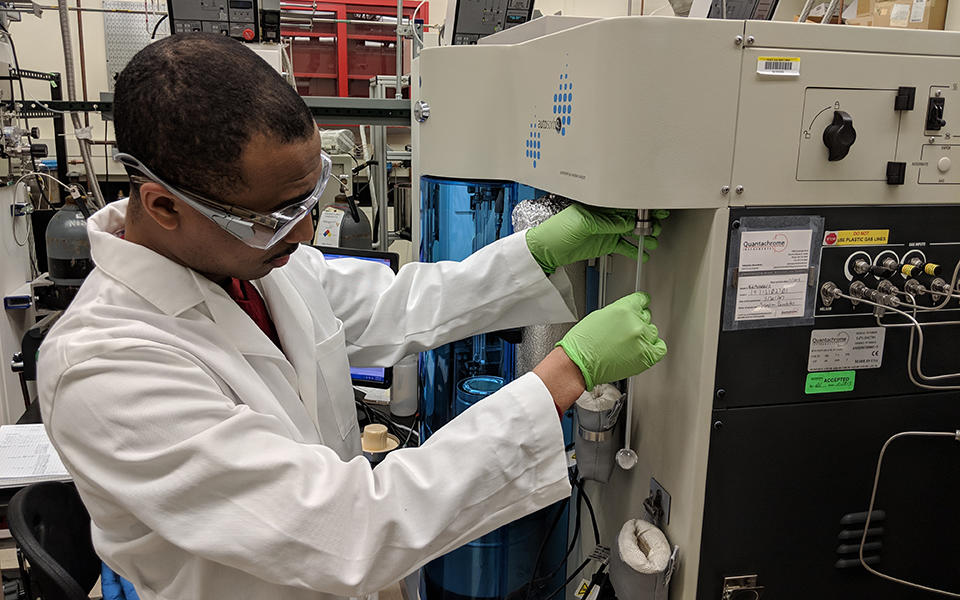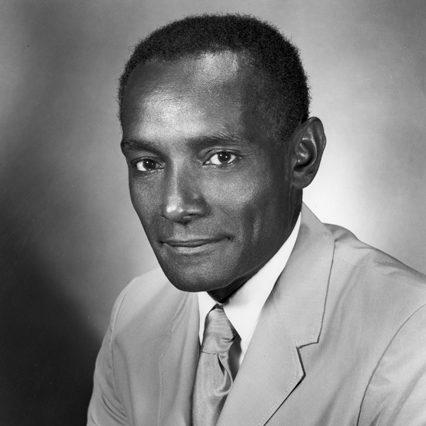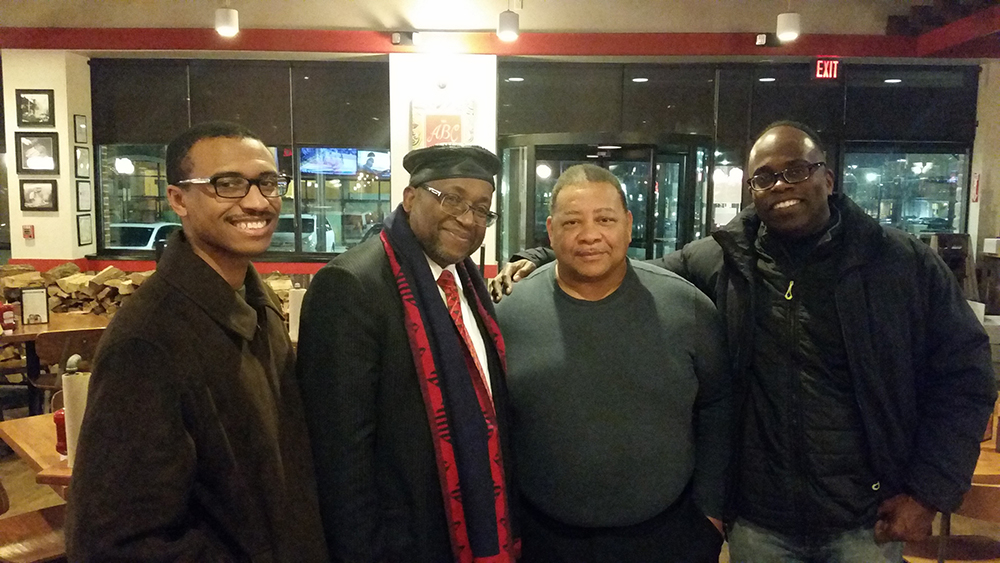Taking Measure
Just a Standard Blog

Here I am preparing a metal-organic framework (MOF) sample for characterization prior to adsorption testing. MOFs are a kind of material being investigated as a potential medium for safely and efficiently storing fuels like hydrogen gas.
As a kid growing up, I’d always had an interest in learning about the world we live in, from reading Zoobooks to watching the History Channel to exploring the neighborhood on my bike. However, it wasn’t until high school that I discovered my excitement for chemistry while taking Mr. Joseph Harris’ AP Chemistry class at Owings Mills High School in Owings Mills, Maryland. We performed several interesting experiments, but recognizing my enthusiasm, Mr. Harris encouraged me to delve even further into learning about the chemical reactions we discussed in class. I’d often stop by his office at the end of the day to talk more about chemistry. For some reason, it just clicked for me, and I can honestly say that I decided to become a chemist because of his teaching and encouragement.
Despite not finishing college themselves, my parents had always stressed the value of education and encouraged me to not only complete college, but to also get an advanced degree. In pursuit of this, I applied for, and was accepted as part of the University of Maryland-Baltimore County (UMBC) Meyerhoff Scholars Program, which was founded by Dr. Freeman Hrabowski, President of UMBC and Robert and Jane Meyerhoff, philanthropists from Baltimore, Maryland. The Meyerhoff Scholars Program aims to increase diversity among future leaders in science, technology, engineering and related fields by encouraging more underrepresented minorities to pursue PhDs and MD/PhDs. My time at UMBC was wonderful: I met lifelong friends, received a great education and expanded my interest in jazz music (through my saxophone!); but it was also where I was first introduced to the world of research. I could not have asked for a better first research mentor than Dr. Dale L. Whalen, a longtime (and now retired) faculty member at UMBC who studied the chemistry of a class of compounds called epoxides. The ones I studied with him were derivatives of the carcinogen benzo[a]pyrene
Dr. Whalen was an incredibly patient and supportive but meticulous (we’ll come back to that) mentor. I remember once making a mistake in the setup of the day’s experiments, which effectively ruined the day’s work before lunchtime. I was distraught, but Dr. Whalen just smiled, congratulating me for my first big failed experiment and asking me to clean up, enjoy lunch and try again tomorrow. I learned that day that even when you make big mistakes, you get back up and take a different approach the next time. A lesson for science and for life!
Excellent Science, Excellent Service

As I neared the end of my undergraduate studies, applying for graduate school programs and fellowship opportunities, I came across the Dolphus E. Milligan Graduate Fellowship at the University of Maryland (UMD), which was co-sponsored by this government agency I had never heard of: the National Institute of Standards and Technology (NIST). Just like the National Institutes of Health (NIH), right? I’d come to learn that the similarities pretty much stop at “government agency” and “National Institute.” Nevertheless, I was intrigued and wanted to learn more about it, so I applied for the fellowship. Weeks later, I received word that I had been invited to compete for the fellowship by presenting my research to a panel of NIST and UMD scientists. Remember when I said Dr. Whalen was meticulous? Well, in preparation for the competition, I had asked if I could practice giving my talk with him as the audience. I had no idea we’d be in that room for over two hours, but I knew my talk back-and-forth by the end of it! While I was a bit nervous in the build-up to my talk (I was the last competitor to present), it went smoothly, and I ended up winning the fellowship! Dr. Whalen was so proud!
Winning the Milligan Fellowship not only helped support my early graduate studies at UMD, but it also gave me the opportunity to do an internship at NIST in conjunction with the SURF program. As the incoming Milligan Fellow, I was invited to visit NIST at the request of then-Chemical Science and Technology Laboratory Director Dr. Willie E. May (who would later become NIST Director) to learn more about NIST, my summer project and Dolphus E. Milligan. Being so used to addressing my professors as “doctor” or “professor,” I was surprised by Dr. May’s insistence on simply being called “Willie,” but eventually found that many people at NIST simply went by their first names (it still took a while to get used to it, though).
Willie introduced me to, and explained the purposes behind some of the NIST Standard Reference Materials (SRM), including fan favorites such as SRM 2387 (Peanut Butter) and SRM 1546 (Meat Homogenate, lovingly called the “Magical Canned Ham” SRM). After learning about these materials, it finally dawned on me just how much NIST impacts our everyday lives. During this time, I also learned more about Dolphus E. Milligan, who was Willie’s mentor at the very beginning of his time at NIST. I learned about Dr. Milligan’s slew of accomplishments at NIST (including winning the Arturo Miolati Prize from the University of Padua in Italy and a U.S. Department of Commerce Gold Medal Award) and his role in the founding of the National Organization for the Professional Advancement of Black Chemists and Chemical Engineers, better known as NOBCChE. You see, the Milligan Fellowship was more than just a program to encourage more underrepresented minorities to pursue PhDs (sound familiar?). In co-founding the fellowship, Willie wanted to honor a man who was a great scientist, while also giving back to his community. Being a Milligan Fellow meant upholding a legacy of doing excellent science alongside excellent service.
The day I met Willie was also the day I first met my mentor for the summer, Dr. Bryant C. Nelson, a bioanalytical chemist who was starting a project studying the interactions of DNA with nanomaterials. Bryant was (and still is) an excellent mentor who provided the right balance of direction and independence during my internship, teaching me about methods and techniques I didn’t know, but also giving me the freedom to operate independently; I even helped to improve some of the protocols the labs used in their experiments! I enjoyed my internship so much, the time flew by, and before I knew it, it was time for me to head to grad school at UMD. But I knew that I wanted to come back to NIST.
New Faces, New Projects
Due to my exposure to the topic at NIST, I decided to join a research group studying nanomaterials at UMD where we focused on creating new catalysts for energy conversion technologies such as hydrogen fuel cells. From synthesis to characterization to testing, I did it all, but it wasn’t easy, and I needed to call back on my early lessons in perseverance to get through. However, the payoff was so worth it! I remember the tears shed by my parents when they saw me become the first member of my family to get a PhD. I also remember going back to my high school to tell Mr. Harris the news; similar tears were shed.
While writing my dissertation, I also wrote a proposal for and received a National Research Council (NRC) postdoctoral fellowship to return to NIST, working again with Bryant. It was a dream come true to return to NIST. So much had changed since my time as a SURF student. So many new faces, new buildings, new projects I didn’t recognize, but the sense of discovery and collaboration remained the same. During my postdoc, I applied my knowledge of nanomaterial characterization to support multiple projects involving nanomaterials and biological systems. Now, it was my turn to show Bryant new methods and techniques I had learned during my PhD work! I love working at NIST for multiple reasons. I love the stimulating and fun environment with so many talented and committed colleagues. I love that the work we do at NIST touches just about every aspect of everyday life, even in ways one wouldn’t normally notice or expect. And I love that working at NIST gives me an opportunity to serve others.
So, what are some of the things I do to help serve others both inside and outside of NIST? Well for starters, I serve with the NIST Sigma Xi chapter, which helps celebrate scientific achievement such as organizing the Postdoctoral Poster Presentation event and recognizing local teachers and students at an annual awards banquet. I’m also a part of the NIST Material Measurement Laboratory (MML) “Accolades” program team, which helps to recognize and celebrate the achievements of MML staff and associates.

Giving Back
On a more personal note, I’ve also been able to give back to those who helped support my journey to NIST. I support the Meyerhoff Scholars Program in many ways, from mentoring both undergrad and graduate students to coming back to UMBC to give talks about my research and experiences to the incoming cohort of students. On the occasions when the Meyerhoff scholars have visited NIST, I’ve been able to help provide their tour of NIST, explaining what we do here and how it impacts society. It brings a smile to my face to share my world with students from my old program just starting their adventures into the world of science. I also recently became one of the NIST liaisons for the Milligan Graduate Fellowship program, where I’ve helped organize and judge for the competition that started me on my path to NIST! Coming full circle, I invited Dr. Whalen to come out to visit NIST one day when he was in the area. Little did I know that in his 40+ year academic career at nearby UMBC, he had never once set foot on NIST’s campus. Being able to give a personal tour of NIST to one of the most influential people in my young career meant so much!
Two of my favorite outreach events are right around the corner as I write this. The first is the annual Emerging Researchers National Conference in Science, Technology, Engineering and Mathematics, hosted by the American Association for the Advancement of Science and the National Science Foundation, where I will serve as a judge and advisor. While a multitude of students from different backgrounds attend the conference, many are underrepresented minorities (including from Puerto Rico) who are attending their first scientific conference and giving scientific presentations for the first time. Although I am a judge and must critique, I use the opportunity to teach new concepts and encourage the students to delve even further into learning about science (where have you heard that one before?).
The other event is the Meyerhoff Selection Weekend, where prospective Meyerhoff Scholars descend on UMBC for a two-day immersive experience. They meet current students and staff, learn more about UMBC and the Meyerhoff Program, and the prospects of a career involving research. Their experience culminates with rigorous interviews that play an important role in whether they will be selected for the program. While it has a serious tilt, the weekend has several opportunities for fun and excitement. My favorite part of the weekend may be the interviews themselves. Why, you may ask? It’s not about drilling the students on why they’d be a good fit for the program (although that’s part of my job) but learning about and hearing the goals and dreams of these high schoolers, where you can just feel their knowledge and passion. It reminds me a bit of myself when I was their age (I shouldn’t be feeling “old” so soon!). It tells me that the future of science is bright and motivates me even more to continue doing what I do. After all, it’s part of my job (in both the technical and social sense) to help pave the way for those coming next, just like so many others did for me.
*edited March 4, 2019
About the author
Related Posts
Comments
Thanks, Sonny. I haven't read Dr. Sacks' story, so I'll have to add it to my reading list!
I would like to talk to you about a project I have been asked to do in Rural Arizona. Your bio is quite impressive and I think that after you hear what I have to say, you might be interested in helping me.
Please call me sir.
623-271-0984
CEO of B2B Companies LLC, B2B Consulting Firm LLC and non-profit Pride of Rural America.
Thanks for your article . It was very important for me .
Thank you for reading! I'm glad to hear that it was impactful!






Beautiful story! Reminds me of reading Memoirs of a Chemical Boyhood by Dr. Oliver Sacks although Dr. Sacks had a pedigree in the sciences from the get go.